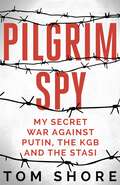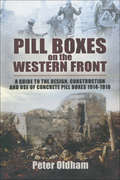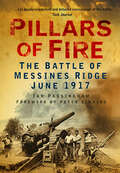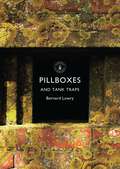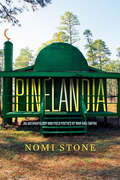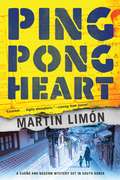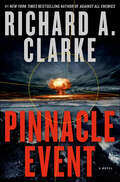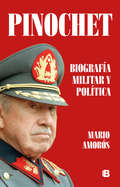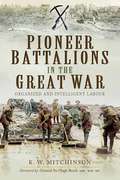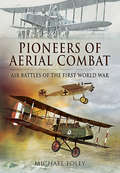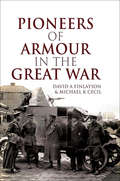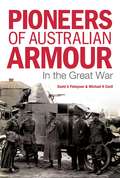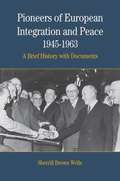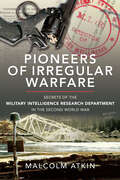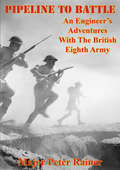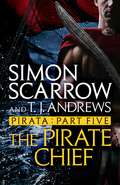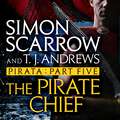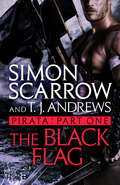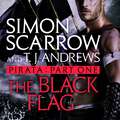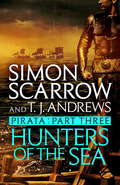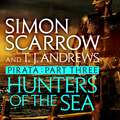- Table View
- List View
Pike and Shot Tactics 1590-1660
by Keith Roberts Adam HookOsprey's examiantion of pike and shot tactics employed in various wars of the 17th century. Throughout the 17th century, large parts of Europe were depopulated during wide-ranging and savage wars of religion and dynasty involving all of the major powers. These included the Dutch-Spanish wars of independence, The Thirty Years' War (1618-1648) and the English Civil Wars (1642-1651). This was the key period in the development of 'modern' infantry tactics, incorporating the use of pole-arms and muskets together, hence the popular expression 'pike and shot'. Although cavalry participated in such conflicts, it was the infantry that was the decisive arm. Such infantry tactics involved different national schools on thought and practice, tested bloodily in great battles. Keith Roberts is a respected expert in this field, who draws on extensive knowledge of original manuals of tactics to create a revealing study of the period. This volume will be both attractive to wargamers and worthy of serious academic attention.
Pilgrim Spy: My secret war against Putin, the KGB and the Stasi
by Tom ShoreThis is one of the great untold stories of the twentieth century.It is a first-hand account of a mission by an SAS soldier sent behind the Iron Curtain by MI6 to find someone who didn't necessarily want to be found and how, on a follow-up mission, he found himself manoeuvring against a mysterious KGB officer - one Major Vladimir Putin and a murder plot by Kremlin hardliners. If the plot had succeeded, it would have given the Russians the excuse they were looking for to roll out the tanks across East Germany, the Berlin Wall would not have fallen - and the map of Europe would look very different today.It tells of roof top chases, the interrogation of terrorists to gain vital information, a beautiful, East German female (who he suspected of being a Stasi spy), betrayal by people he trusted, an escape through forests pursued by enemy agents and ending in a climactic gun battle at Colditz castle, formerly used by the Soviets as a psychiatric hospital to detain dissidents.In James Bond novels, it is MI6 operators who carry out this type of work, but in reality, when facing a committed foe in an isolated and deadly environment, the intelligence agencies call upon members of the British Special Forces. This is the first insider account of how UK operators working undercover, do what needs to be done in order to protect the UK's interests abroad - revealing their hidden hand in world events.
Pill Boxes on the Western Front: A Guide to the Design, Construction and Use of Concrete Pill Boxes, 1914–1918
by Peter OldhamWhen the First World War froze into a static line of trenches stretching from the North Sea to the Swiss border, the most obvious means of protection against the murderous machine-gun fire which both sides inflicted upon each other was some form of shell-proof shelter which from which fire could be returned in safety, hence the development of the pill box. The idea was certainly not new but the technology required to build them under the prevailing circumstances presented problems hitherto undreamed of. In this remarkably absorbing study of what at first seems a somewhat arcane study of what at first seems a somewhat arcane subject, Peter Oldham, himself a concrete technologist, examines the problems of the design and construction of the pill boxes of the Western Front. He describes how the innumerable difficulties involved in what might to the untrained eye seem to be a fairly simple structure, were gradually overcome. Containing as it does, a gazetteer of the remaining pill boxes and bunkers still to be found in Flanders and Picardy, this book will prove an invaluable guide to the members of many clubs and societies which annually make pilgrimages to the battlefields of the First World War and certainly add a new dimension and interest to their visits to the Western Front.
Pillars of Fire: The Battle of Messines Ridge, 1917
by Peter Simkins Ian Passingham'Gentleman, we may not make history tomorrow, but we shall certainly change the geography.' So said General Plumer the day before 600 tons of explosives were detonated under the German position on Messines Ridge. The explosion was heard by Lloyd George in Downing Street, and as far away as Dublin.Until 1918, Messines was the only clear cut Allied victory on the Western Front, coming at a time when Britain and her allies needed it most: boosting Allied morale and shattering that of the Germans. Precisely orchestrated, Messines was the first true all-arms modern battle which brought together artillery, engineers, infantry, tanks, aircraft and administrative units from a commonwealth of nations to defeat the common enemy. So why is its name not as familiar as the Somme, Passchendaele or Verdun?This book examines the battle for the Messines-Wytschaete Ridge from the British, ANZAC and German perspectives. Illustrated with archive photographs and maps, it is a major contribution to our understanding of one of the seminal battles of the First World War.
Pillboxes and Tank Traps
by Bernard LowryThe very real threat of the invasion of Britain in 1940 initiated a huge military construction program. Around the vulnerable coasts of the country, as well as inland, were built thousands of pillboxes, anti-tank barriers and other obstacles to defeat or delay the invader. The end of WWII saw much cleared away but sufficient still remains, and this book guides the curious in identifying the remaining defensive structures and features which once formed part of the military landscape. Although, to our eyes, the survivals might seem randomly placed, there was always a considered plan and the book describes how these plans worked. Previously little appreciated, a national project (The Defence of Britain) has now identified many of the sites and there is a growing movement to protect what remains.
Pinelandia: An Anthropology and Field Poetics of War and Empire (Atelier: Ethnographic Inquiry in the Twenty-First Century #8)
by Nomi StoneAcross the pine forests and deserts of America, there are mock Middle Eastern villages, mostly hidden from public view. Containing mosques, restaurants, street signs, graffiti in Arabic, and Iraqi role-players, these villages serve as military training sites for cultural literacy and special operations, both seen as crucial to victory in the Global War on Terror. In her gripping and highly original ethnography, anthropologist Nomi Stone explores US military predeployment training exercises and the lifeworlds of the Iraqi role-players employed within the mock villages, as they act out to mourn, bargain, and die like the wartime adversary or ally. Spanning fieldwork across the United States and Jordan, Pinelandia traces the devastating consequences of a military project that seeks to turn human beings into wartime technologies recruited to translate, mediate, and collaborate. Theorizing and enacting a field poetics, this work enlarges the ethnographic project into new cross-disciplinary worlds. Pinelandia is a political phenomenology of American empire and Iraq in the twenty-first century.
Ping-Pong Heart
by Martin Limon<p>South Korea, 1974. US Army CID Sergeants George Sueño and Ernie Bascom are assigned an underwhelming case of petty theft: Major Frederick M. Schulz has accused Miss Jo Kyong-ja, an Itaewon bar girl, of stealing twenty-five thousand won from him—a sum equaling less than fifty US dollars. After two very divergent accounts of what happened, Miss Jo is attacked, and Schulz is found hacked to death only days later. Did tensions simply escalate to the point of murder?<p>Looking into other motives for Schulz’s death, George and Ernie discover that the major was investigating the 501st Military Intelligence Battalion: the Army’s counterintelligence arm, solely dedicated to tracking North Korean spies. <p>The division is rife with suspects, but it’s dangerous to speak out against them in a period of Cold War finger-pointing. As George and Ernie go head-to-head with the battalion’s powerful, intimidating commander, Lance Blood, they learn that messing with the 501st can have very personal consequences.From the Hardcover edition.
Pinnacle Event: A Novel
by Richard A. ClarkeWith the 2016 presidential election just weeks away, five simultaneous murders on three continents lead to an investigation revealing the recent black-market sale of five nuclear weapons. But who bought them? And what is their intended target?Washington fears the bombs are timed to explode in major American cities before the election. They call on intelligence expert Ray Bowman to prevent the attack. With the help of a Mossad agent and a female South African intelligence officer, he follows a trail across the world to track down the missing nukes. Along the way, he discovers that the people who now control the bombs intend to do something much more devastating than expected, something that it will make nuking a few cities look like a mild attack.Drawing on his decades of experience at the highest levels of national security, Richard A. Clarke's Pinnacle Event—the Pentagon code for a nuclear threat—is a gripping international thriller told from the rare vantage point of a true Washington insider.
Pinochet. Biografía militar y política
by MARIO AMOROSEn la actualidad, cuando una ola reaccionaria recorre el planeta y diferentes voces en distintos países lo reivindican, esta biografía de Augusto Pinochet se vuelve más urgente que nunca. El general Augusto Pinochet integra el panteón de las personalidades más siniestras de la historia. No solo en Chile, donde su régimen se cobró la vida de miles de personas, torturó a tantas otras y destruyó la democracia republicana, sino también a nivel mundial. El golpe de Estado del 11 de septiembre de 1973 que derrocó al presidente Salvador Allende y su posterior dictadura, que se prolongó hasta 1990; la imposición feroz de los principios del neoliberalismo a partir de 1975 y su alto costo en desempleo y hambre, y su detención en Londres en 1998 a petición del juez Baltasar Garzón, fundada en la jurisdicción universal frente a los crímenes de lesa humanidad, lo transforman en un personaje ineludible cuya figura regresa cada cierto tiempo.Amorós, apoyándose en una amplísima documentación inédita, reconstruye la infancia de Pinochet y su vida familiar, relata al detalle su larga trayectoria militar, y desvela episodios ocultos como su participación en la masonería; examina su papel durante el gobierno de Allende y en las horas dramáticas del golpe de Estado, y perfila su ambición de poder, que lo llevó a erigir un régimen que, a partir del terror, refundó Chile desde sus cimientos.
Pioggia e Sangue
by Villi AsgeirssonGunnar era un giovane giornalista in Islanda. Occuparsi di cronaca locale lo annoiava e lui voleva disperatamente uscire da quella strada a senso unico verso il dimenticatoio. Quando in Spagna scoppiò la guerra civile, lui vide l'opportunità, la sua strada verso la grandezza. Barcellona era una città con poster propagandistici colorati e personaggi interessanti. Venivano forgiate amicizie, si rideva, si beveva e si lottava insieme, ma lui avrebbe avuto un debito da pagare. Il prezzo d'ingresso a questa guerra era tradire i propri amici. Nulla sarebbe stato più lo stesso dopo che Barcellona andò in fiamme, il 3 maggio 1937. Non ci si poteva fidare di nessuno, gli amici si rivoltavano l'uno contro l'altro e l'unica cosa che contava era sopravvivere. Pioggia e Sangue è il secondo romanzo di Villi Asgeirsson. Il suo esordio, Under the Black Sand [Sotto la Sabbia Nera], è stato pubblicato nel 2013.
Pioneer Battalions in the Great War: Organized and Intelligent Labour
by K. W. MitchinsonPioneer battalions, created as an expedient in 1914, were a new concept in the British Army. Intended to provide the Royal Engineers, with skilled labour and to relieve the infantry from some of its non-combatant duties, Pioneers became the work horses of the Expedentiary Forces. The Coldstream Guards and over three dozen Country regiments, each created at least one pioneer battalion. Several New Army battalions were raised specifically as Pioneers, while others were converted Territorials or Kitchener units formed originally as conventional infantry. Adopting a badge of a cross rifle and pick, these battalions wired, dug and reverted in all weathers and in all terrain. On many occasions they abandoned their working tools and fought alongside the infantry in repelling enemy attacks. In their efforts to stem the German offensives of 1918, several Pioneer units fought themselves to virtual annihilation. Often confused with the Pioneer Corps of the Second World War, the work of the Pioneer battalions has been largely ignored or misunderstood. Far from being the units of the ages and inform, these sixty-eight battalions played a major role in the Allied victory. Pioneer Battalions in the Great War traces the reasons behind the creation of these units, the work they performed and the dramatic transitions many of them had to undergo. It also examines how and why Pioneers have never received the recognition they deserve.
Pioneers of Aerial Combat: Air Battles of the First World War
by Michael FoleyWhen the Wright Brothers made their first flight in the early years of the twentieth century it sparked the imagination of those who wanted to fly, both in their country and around the world. In Britain, however, the spark wasn't strong enough to light a fire and it was in other parts of Europe, notably France, where flight began to develop seriously.Early pioneers of flight faced a high level of danger and many died in pursuit of fulfilling their dream. Although aircraft design had made incredible progress by the time of the outbreak of war, accidents still occurred on a regular basis. For some time, as many pilots died in accidents as they did in combat. This publication consolidates a range of stories, insights, and facts that, when combined, offer a vivid impression of events as they unfolded. The chaos stirred up during the First World War and the scramble to develop aircraft in response to the threat to homeland security is eloquently relayed, as are the battles that characterized this conflicted era. The reality of conflict gave aviation engineers and designers the opportunity to test their craft in the harshest of environments, pushing the benchmark ever higher in terms of what could be achieved. Sure to appeal to aviation enthusiasts and historians alike, this work offers the reader a full account of the developmental early days of flight.
Pioneers of Armour in the Great War: In The Great War
by David A. Finlayson Michael K CecilPioneers of Armour in the Great War tells the story of the only Australian mechanized units of the Great War. The 1st Australian Armoured Car Section, later the 1st Australian Light Car Patrol, and the Special Tank Section were among the trailblazers of mechanization and represented the cutting edge of technology on the Great War battlefield.The1st Armoured Car Section was raised in Melbourne in 1916, the brainchild of a group of enthusiasts who financed, designed and then built two armored cars. Having persuaded the Australian Army of the vehicles' utility in the desert campaign, the armored car section, later re-equipped with Model T Fords and retitled the 1st Australian Light Car Patrol, provided valuable service until well after the Armistice.The First World War also saw the emergence of the tank which, despite unpromising beginnings, was to realize its potential in the crucial 1918 battles of Hamel and Amiens. A British Mark IV tank which toured Australia in 1918 demonstrated the power of this new weapon to an awestruck Australian public.Much of the story of the armored cars is told in the voices of the original members of the section and in newspaper articles of the time which highlight the novelty of these vehicles. Painstaking research has produced a remarkable collection of images to accompany the narrative, many never previously published. Biographies of the members of these extraordinary units are also a feature of this book, their stories told from the cradle to the grave. Appendixes provide a wealth of supporting biographical and technical information that enriches the text and adds factual detail.
Pioneers of Australian Armour: In the Great War
by David A. Finlayson Michael K. CecilPioneers of Australian Armour tells the story of the only Australian mechanised units of the Great War. The 1st Australian Armoured Car Section, later the 1st Australian Light Car Patrol, and the Special Tank Section were among the trailblazers of mechanisation and represented the cutting edge of technology on the Great War battlefield. The 1st Armoured Car Section was raised in Melbourne in 1916, the brainchild of a group of enthusiasts who financed, designed and then built two armoured cars. Having persuaded the Australian Army of the vehicles&’ utility in the desert campaign, the Armoured Car Section, later re-equipped with Model T Fords and retitled the 1st Australian Light Car Patrol, provided valuable service until well after the Armistice. The First World War also saw the emergence of the tank which, despite unpromising beginnings, was to realise its potential in the crucial 1918 battles of Hamel and Amiens. A British Mark IV tank which toured Australia in 1918 demonstrated the power of this new weapon to an awestruck Australian public. Much of the story of the armoured cars is told in the voices of the original members of the section and in newspaper articles of the time which highlight the novelty of these vehicles. Painstaking research has produced a remarkable collection of images to accompany the narrative, many never previously published. Biographies of the members of these extraordinary units are also a feature of this book, their stories told from the cradle to the grave. Appendixes provide a wealth of supporting biographical and technical information that enriches the text and adds factual detail.
Pioneers of European Integration and Peace 1945-1963: A Brief History with Documents
by Sherrill Brown WellsThis book explores the political risks taken by those farsighted leaders in the postwar period to heal the wounds of hostility and prevent another war.
Pioneers of Irregular Warfare: Secrets of the Military Intelligence Research Department of the Second World War
by Malcolm AtkinCovert operations and ingenious weapons for irregular warfare were developed rapidly, and with great success, by the British during the Second World War, and the story of the most famous organizations involved like SOE, the SAS and Section D of SIS is now well known, but Military Intelligence (Research), the smallest but one of the most influential of these units is relatively unknown. Malcolm Atkin’s intriguing and meticulously researched account describes their role at the heart of the War Office in trying to develop a ‘respectable’ arm of irregular warfare and their innovations ranging from the early Commandos, sticky bombs, limpet mines, booby traps, and even helicopters to the creation of the MI9 escape organization. They were an ‘ideas factory’ rather than an operational body but the book describes their worldwide operations including Finland, Norway, Romania, the Middle East and Central Africa. This is also a story of conflicting personalities between Jo Holland, the visionary but self-effacing head of MI(R) and his ambitious deputy, Colin Gubbins (later head of SOE), and the latter’s private war with SIS.
Pionierinnen der Psychiatrie in Frankreich und Deutschland: Sechs ausgewählte Fallstudien (Frauen in Philosophie und Wissenschaft. Women Philosophers and Scientists)
by Jana ProkopDurch die biographische Herangehensweise gewährt diese Publikation einen differenzierten und in seiner Form einzigartigen Blick auf den Werdegang ärztlicher Pionierinnen in Deutschland und Frankreich von 1870 bis 1945. Dargestellt werden die Lebensläufe von sechs Psychiaterinnen, diese sind eingebettet in eine vergleichende Psychiatriegeschichte beider Länder mit besonderem Augenmerk auf die Entwicklungen der Psychiatrie in Zeiten des Zweiten Weltkrieges. Informationen zum Hochschulzugang von Frauen, dem Medizinstudium der ersten Studentinnen, zu Forschung sowie weiblicher Berufstätigkeit von Ärztinnen in beiden Ländern runden das Werk ab.
Pipeline to Battle: An Engineer’s Adventures with the British Eighth Army [Illustrated Edition]
by Major Peter Rainer REIncludes the War in North Africa Illustration Pack - 112 photos/illustrations and 21 maps.A Sapper with the Eight Army tells the story of one of the greatest engineering feats of the war...of how the man who became known as the "water bloke" to the entire British Army in Africa delivered precious drinking water from the Nile over the shell-ridden wastes of the desert. An engrossing sidelight on the brilliant campaign that cleared the way for the invasion of Europe."But When It Comes To SlaughterYou'll Do Your Work On Water"Rudyard Kipling
Pirata: Part five of the Roman Pirata series
by Simon ScarrowThe fifth episode in the new Roman pirate series of ebook novellas from the Sunday Times bestselling authors Simon Scarrow and T. J. Andrews. AD 25. Mighty Rome is reclaiming control of the pirate-haunted seas, endangering the livelihoods of the pirate crews. Despite their hard-won fighting skills, the pirates are losing. Until one man, a black flag captain like no others, steps in to challenge the Roman enemy ...A vast fleet of pirate ships has gathered, black pennants fluttering in the breeze. On board are men who would slit each other's throats rather than work together. They have sailed from all directions, reluctant and suspicious, at the request of the notorious pirate Telemachus, the new captain of the Poseidon's Trident. They come in honour of the fallen Bulla, Telemachus's predecessor, not for the young upstart. But Telemachus has a message they can't ignore. The Ravenna fleet, under the command of the ruthless Prefect Canis, has destroyed their trade and devastated many of their hideouts. Once the prevailing sea power, the brotherhood of pirates now live in fear. Telemachus has a bold plan: rather than flee or hide, attack. Fighting is in the pirates' blood. If they can entice the warships out of Ravenna, the pirate force will outnumber the remaining Romans. Then, anything is possible. For every pirate present, there's a glimpse of a future ruling the waves again. And for Telemachus, the chance to save his brother Nereus, languishing in a Roman cell. Do or die, with nothing to lose ...Episode five in the PIRATA ebook novella series.
Pirata: Part five of the Roman Pirata series (Pirata #10)
by Simon Scarrow T. J. AndrewsPart five in the new Roman pirate series of novellas from the Sunday Times bestselling authors Simon Scarrow and T. J. Andrews. AD 25. Mighty Rome is reclaiming control of the pirate-haunted seas, endangering the livelihoods of the pirate crews. Despite their hard-won fighting skills, the pirates are losing. Until one man, a black flag captain like no others, steps in to challenge the Roman enemy ...A vast fleet of pirate ships has gathered, black pennants fluttering in the breeze. On board are men who would slit each other's throats rather than work together. They have sailed from all directions, reluctant and suspicious, at the request of the notorious pirate Telemachus, the new captain of the Poseidon's Trident. They come in honour of the fallen Bulla, Telemachus's predecessor, not for the young upstart. But Telemachus has a message they can't ignore. The Ravenna fleet, under the command of the ruthless Prefect Canis, has destroyed their trade and devastated many of their hideouts. Once the prevailing sea power, the brotherhood of pirates now live in fear. Telemachus has a bold plan: rather than flee or hide, attack. Fighting is in the pirates' blood. If they can entice the warships out of Ravenna, the pirate force will outnumber the remaining Romans. Then, anything is possible. For every pirate present, there's a glimpse of a future ruling the waves again. And for Telemachus, the chance to save his brother Nereus, languishing in a Roman cell. Do or die, with nothing to lose ...The full novel of PIRATA is available now.(P)2019 Headline Publishing Group Ltd
Pirata: Part five of the Roman Pirata series (Pirata #5)
by Simon Scarrow T. J. AndrewsThe fifth episode in the new Roman pirate series of ebook novellas from the Sunday Times bestselling authors Simon Scarrow and T. J. Andrews. AD 25. Mighty Rome is reclaiming control of the pirate-haunted seas, endangering the livelihoods of the pirate crews. Despite their hard-won fighting skills, the pirates are losing. Until one man, a black flag captain like no others, steps in to challenge the Roman enemy ...A vast fleet of pirate ships has gathered, black pennants fluttering in the breeze. On board are men who would slit each other's throats rather than work together. They have sailed from all directions, reluctant and suspicious, at the request of the notorious pirate Telemachus, the new captain of the Poseidon's Trident. They come in honour of the fallen Bulla, Telemachus's predecessor, not for the young upstart. But Telemachus has a message they can't ignore. The Ravenna fleet, under the command of the ruthless Prefect Canis, has destroyed their trade and devastated many of their hideouts. Once the prevailing sea power, the brotherhood of pirates now live in fear. Telemachus has a bold plan: rather than flee or hide, attack. Fighting is in the pirates' blood. If they can entice the warships out of Ravenna, the pirate force will outnumber the remaining Romans. Then, anything is possible. For every pirate present, there's a glimpse of a future ruling the waves again. And for Telemachus, the chance to save his brother Nereus, languishing in a Roman cell. Do or die, with nothing to lose ...Episode five in the PIRATA ebook novella series.
Pirata: Part one of the Roman Pirata series (Pirata #1)
by Simon Scarrow T. J. AndrewsThe enthralling first ebook novella in the brand new Roman pirate series by Sunday Times bestselling authors Simon Scarrow and T. J. Andrews. It is AD 25. The Roman Empire stretches from Hispania in the west to Armenia in the east, Merchantmen roam the seas, transporting people, livestock and all manner of goods. And where there are merchant ships, there will be pirates ...On a blustery night in the rough port of Piraeus, Captain Clemestes staggers drunkenly through the dark streets as he heads for his ship, Selene. When he becomes aware of the sinister figures following him, he fears the worst, for life is cheap in this den of thieves and cutthroats. Then a man bursts from the shadows and by brute force drives the attackers away. Clemestes is astounded to find that he has been saved not by a powerful soldier, or a fellow sailor, but by a half-starved youth, compelled to come to the aid of a stranger, in the face of impossible odds.The youth is Telemachus, an orphan with a story that is both commonplace and tragic. When the kind-hearted Clemestes suggests he joins Selene's crew, Telemachus sees no reason to refuse. But little does he know of the dangers of his new world. There's no running away once a ship is at sea - and when a pirate fleet appears on the horizon, Telemachus's troubles have just begun ...Episode one in the PIRATA ebook novella series.
Pirata: Part one of the Roman Pirata series (Pirata #6)
by Simon Scarrow T. J. AndrewsPart one in the brand new Roman pirate series by Sunday Times bestselling authors Simon Scarrow and T. J. Andrews. It is AD 25. The Roman Empire stretches from Hispania in the west to Armenia in the east, Merchantmen roam the seas, transporting people, livestock and all manner of goods. And where there are merchant ships, there will be pirates ...On a blustery night in the rough port of Piraeus, Captain Clemestes staggers drunkenly through the dark streets as he heads for his ship, Selene. When he becomes aware of the sinister figures following him, he fears the worst, for life is cheap in this den of thieves and cutthroats. Then a man bursts from the shadows and by brute force drives the attackers away. Clemestes is astounded to find that he has been saved not by a powerful soldier, or a fellow sailor, but by a half-starved youth, compelled to come to the aid of a stranger, in the face of impossible odds.The youth is Telemachus, an orphan with a story that is both commonplace and tragic. When the kind-hearted Clemestes suggests he joins Selene's crew, Telemachus sees no reason to refuse. But little does he know of the dangers of his new world. There's no running away once a ship is at sea - and when a pirate fleet appears on the horizon, Telemachus's troubles have just begun ...The full novel of PIRATA is available now.(P)2019 Headline Publishing Group Ltd
Pirata: Part three of the Roman Pirata series (Pirata #3)
by Simon Scarrow T. J. AndrewsThe third in the new Roman pirate series of ebook novellas from the Sunday Times bestselling authors Simon Scarrow and T. J. Andrews.AD 25. As Roman naval squadrons patrol the Adriaticum, a young pirate captain hunts for prey. But his most dangerous enemy may be on his own side ...The young pirate Telemachus has impressed Captain Bulla with his courage and skill, and has been made captain of a small ship, Galatea, with his loyal friend Geras as first mate. Their target: the trade routes of the northern Adriaticum, with the promise of rich and easy pickings. But the exhilaration of command quickly fades as Telemachus and his men struggle to find any ships worth looting. Supplies are running low, and mutiny is brewing. Suspecting treachery by his arch enemy Hector, whose own ship was dispatched to other waters, Telemachus fears not only for his crew, but for his dream of rescuing his brother Nereus from slavery. When Telemachus learns of a rich cargo ship at anchor, he senses his chance for glory. A fortune in ivory and spices is in sight. There's a catch, though: the port is host to an auxiliary garrison of the Roman army. Only the most reckless captain would dare target this prey. Telemachus will need to call on all his cunning and survival skills if he is to win the day, avert mutiny, and exact his revenge on his tormentor ...Episode three in the PIRATA ebook novella series.
Pirata: Part three of the Roman Pirata series (Pirata #8)
by Simon Scarrow T. J. AndrewsPart three in the new Roman pirate series of novellas from the Sunday Times bestselling authors Simon Scarrow and T. J. Andrews.AD 25. As Roman naval squadrons patrol the Adriaticum, a young pirate captain hunts for prey. But his most dangerous enemy may be on his own side ...The young pirate Telemachus has impressed Captain Bulla with his courage and skill, and has been made captain of a small ship, Galatea, with his loyal friend Geras as first mate. Their target: the trade routes of the northern Adriaticum, with the promise of rich and easy pickings. But the exhilaration of command quickly fades as Telemachus and his men struggle to find any ships worth looting. Supplies are running low, and mutiny is brewing. Suspecting treachery by his arch enemy Hector, whose own ship was dispatched to other waters, Telemachus fears not only for his crew, but for his dream of rescuing his brother Nereus from slavery. When Telemachus learns of a rich cargo ship at anchor, he senses his chance for glory. A fortune in ivory and spices is in sight. There's a catch, though: the port is host to an auxiliary garrison of the Roman army. Only the most reckless captain would dare target this prey. Telemachus will need to call on all his cunning and survival skills if he is to win the day, avert mutiny, and exact his revenge on his tormentor ...The full novel of PIRATA is available now.(P)2019 Headline Publishing Group Ltd

